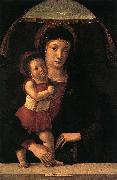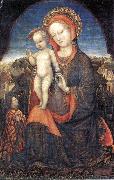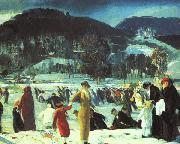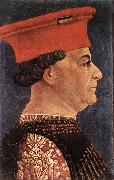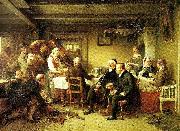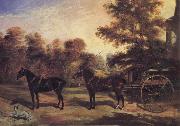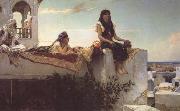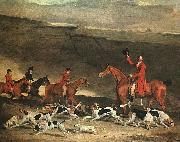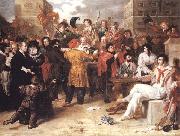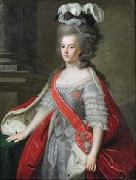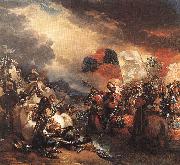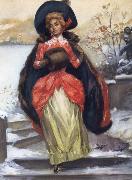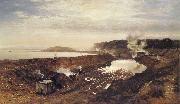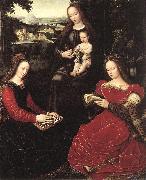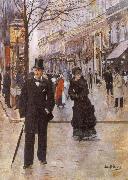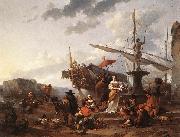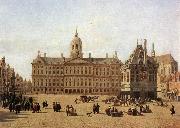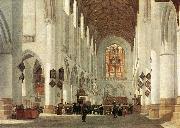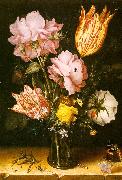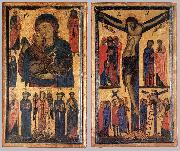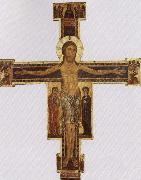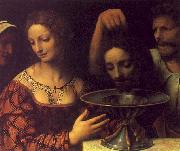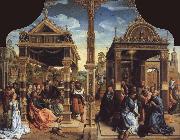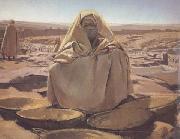|
|
|
|
|
|
|
|
|
|
|
|
 |
ben nicholson
|
|
Born in 1894 in Denham, Buckinghamshire, Nicholson was the son of the painter Sir William Nicholson and Mabel Pryde, and the brother of Nancy Nicholson. The family moved to London in 1896 and Nicholson was educated at Tyttenhangar Lodge Preparatory School, Seaford, Heddon Court, Hampstead and then as a boarder at Gresham's School, Holt, Norfolk. He trained as an artist at the Slade School of Fine Art from 1910?C1914, where he was a contemporary of Paul Nash, Stanley Spencer, Mark Gertler, and Edward Wadsworth.
Nicholson was married three times: firstly to Winifred Roberts (married 5 November 1920 at St. Martin-in-the-Fields Church, London; divorced 1938) with whom he had three children, a son Jake in June 1927, a daughter Kate in July 1929 (who later became an artist herself) and a son Andrew in September 1931. His second marriage was to fellow artist Barbara Hepworth (married 17 November 1938 at Hampstead Register Office; divorced 1951) with whom he had triplets, two daughters Sarah and Rachel and a son Simon in 1934 and third to Felicitas Vogler, a German photographer (married July 1957; divorced 1977). |
|
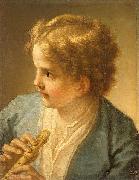 |
Benedetto Luti
|
|
Benedetto Luti (17 November 1666 - 17 June 1724) was an Italian painter.
Luti was born in Florence. He moved to Rome in 1691 where he was patronized by Cosimo III de' Medici, Grand Duke of Tuscany, an enthusiast for the pastel portrait. Luti was one of the first artists to work in pastels as the final composition as opposed to initial studies for paintings or frescoes. He also worked in oils and painted frescoes for the Basilica di San Giovanni in Laterano.
Luti was also a successful art dealer and ran a school of drawing; among his pupils were Giovanni Domenico Piastrini, Giovanni Paolo Panini, Claude Arnulphy, Jean-Baptiste van Loo, William Kent. |
|
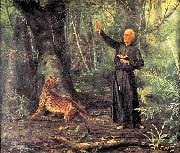 |
Benedito Calixto
|
|
(14 October 1853 -- 31 May 1927) was a Brazilian painter. His works usually depicted figures from Brazil and Brazilian culture, including a famous portrait of the bandeirante Domingos Jorge Velho in 1923, and scenes from the coastline of São Paulo. Unlike many artists of the time, Calixto's patron was an individual other than the state, who were "the most dependable source of patronage." |
|
|
|
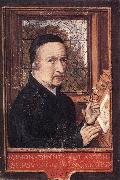 |
BENING, Simon
|
|
Flemish Northern Renaissance Manuscript Illuminator, ca.1483-1561 |
|
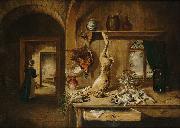 |
Benjamin Blake
|
|
United Kingdom (1757- 1830 ) - Painter
painted Still life of game in a larder in 1830 |
|
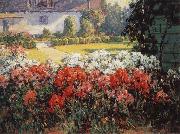 |
Benjamin C.Brown
|
|
American,is best remembered for his Impressionist renderings of the Sierra Mountains and poppy-filled spring meadows.1865-1942 |
|
|
|
 |
Benjamin Champney
|
|
(November 20, 1817 - December 11, 1907) was a painter whose name has become synonymous with White Mountain art of the 19th century. He began his training as a lithographer under celebrated marine artist Fitz Henry Lane at Pendleton's Lithography shop in Boston. Most art historians consider him the founder of the "North Conway Colony" of painters who came to North Conway, New Hampshire and the surrounding area during the second half of the 19th century. His paintings were often used to make chromolithographs that were subsequently sold to tourists who could not afford Champney's originals. He exhibited regularly at the Boston Athenæum and was a founder of the Boston Art Club
|
|
|
|
|
|
|
|
|
|
|
|
|
|
|
|
|
|
|
|
|
|
|
|
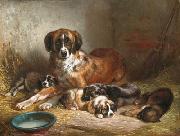 |
Benno Adam
|
|
(July 15, 1812, Munich - March 9, 1892, Kehlheim) was a German painter.
He specialised in animal portraits and market and hunting scenes.
He was the son of painter Albrecht Adam.
|
|
|
|
|
|
|
|
|
|
|
|
 |
Benvenuto Tisi
|
|
(1481 - September 6, 1559) was a Late-Renaissance-Mannerist Italian painter of the School of Ferrara. Garofalo's career began attached to the court of the Duke d'Este. His early works have been described as "idyllic", but they often conform to the elaborate conceits favored by the artistically refined Ferrarese court.
Born in Ferrara, Tisi is claimed to have apprenticed under Panetti and perhaps Costa and was a contemporary, and sometimes collaborator with Dosso Dossi. In 1495 he worked at Cremona under Boccaccino, who initiated him into Venetian colouring. He may have spent three years (1509 - 1512), in Rome. This led to a stylized classical style, more influenced by Giulio Romano.
Invited by a Ferrarese gentleman, Geronimo Sagrato, to Rome, he worked briefly under Raphael in the decoration of the Stanza della Segnatura. From Rome family affairs recalled him to Ferrara; there Duke Alfonso I commissioned him to execute paintings, along with the Dossi, in the Delizia di Belriguardo and in other palaces. Thus the style of Tisi partakes of the Lombard, the Roman and the Venetian modes.
He painted extensively in Ferrara, both in oil and in fresco, two of his principal works being the "Massacre of the Innocents" (1519), in the church of S. Francesco, and his masterpiece "Betrayal of Christ" (1524). For the former he made clay models for study and a clay figure. He continued constantly at work until in 1550 blindness overtook him, painting on all feast-days in monasteries for the love of God. He had married at the age forty-eight, and died at Ferrara on the 6th (or 16th) of September 1559, leaving two children.
Garofalo combined sacred inventions with some very familiar details. A certain archaism of style, with a strong glow of colour, suffices to distinguish from the true method of Raphael even those pictures in which he most closely resembles the great masterthis sometimes very closely; but the work of Garofalo is seldom free from a certain trim pettiness of feeling and manner.
|
|
|
|
|
|
|
|
|
|
|
|
|
|
|
|
 |
Berkes Antal
|
|
(1874-1938) was a Hungarian painter, born in Budapest, Hungary. Lived in Paris for some time and produced cityscapes there as well as similar street scenes of Budapest and Vienna.
He studied at The Academy of Fine Arts between 1889-1894 in Budapest, Hungary. He first started painting landscapes, and later changed to painting street scenes of Budapest. His popularity and sales increased so he started "mass producing" many of his works, meeting the requirements of the art dealers of his age. His work went through light and dark periods as he experimented with light.
|
|
|
|
|
|
|
|
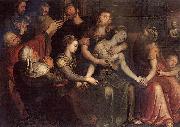 |
Bernaert de Ryckere
|
|
Bernaert de Rijckere (c1535, Kortrijk - 1590, Antwerp), was a Flemish Renaissance painter.
According to Karel van Mander he was born in Kortrijk and was admired there for an altarpiece depicting Christ bearing the cross, which he made for the St. Marten's church of the brothers of the Cross there. He later took on a different style that Karel van Mander had heard of but had not seen to be able to judge it for himself. He said he moved to Antwerp and joined the Guild of St. Luke there in 1561.
According to the Netherlands Institute for Art History he was the teacher of his son, the painter Abraham de Rijcke, and is known for landscapes and historical allegories. |
|
|
|
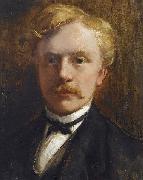 |
Bernard Blommers
|
|
(30 January 1845 in The Hague - 12 December 1914 in The Hague) was a Dutch etcher and painter of the Hague School.
He learned lithography early in his career, and then studied at the Hague Akademie under Johan Philip Koelman until 1868.His early paintings were mostly genre works depicting fishermen and their wives, heavily influenced by Jozef Israëls.The later works (from about 1890) are more loosely painted, although maritime and genre scenes remained the primary subject matter. His work was critically successful during his lifetime, being sought after by English, Scottish and American collectors.
|
|
|
|
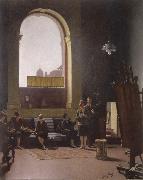 |
Bernard Hall
|
|
Artist, teacher, Director of Melbourne??s National Gallery and Felton Bequest advisor
English-born Australian, 1859-1935 |
|
|
|
|
|







